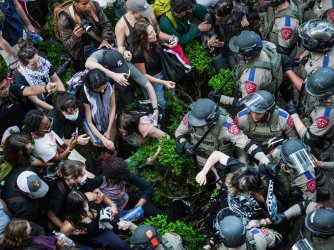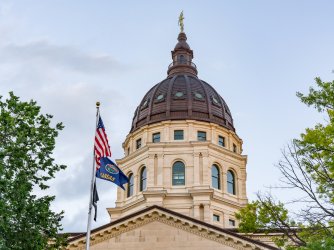Table of Contents
A review of surveys on free speech and expression

New surveys on campus free expression are coming out seemingly everyday. Just in the last month, the following surveys have been released:
- FIRE’s own survey, conducted by YouGov and released yesterday, analyzing the attitudes of college students toward self-expression and censorship, students’ reactions to the speech of their peers, guest speakers, and disinvitations, and how students identify and perceive of hate speech.
- A new project surveying college students on their views toward the legality of free expression by UCLA professor John Villasenor, a nonresident senior fellow at the Brookings Institution. This project has been partially replicated by YouGov and the Economist.
- The Bucknell Institute for Public Policy released a report on free expression and due process.
- Just this week, the William F. Buckley, Jr. Program at Yale University released a new survey of college students’ attitudes toward free expression, including their views of hate speech. This follows the Buckley Program’s 2015, 2016, and 2017 surveys, also on campus expression.
- Finally, the Cato Institute will soon release a report on adults’ attitudes toward free expression.
This is not a new area of research — survey data on Americans’ attitudes toward free expression has been systematically collected since 1972, and various researchers have analyzed the views of college freshmen since 1966. But it can be difficult to sort through all the data, especially because each study samples different populations, uses different methodologies for collecting and analyzing data, and asks respondents different questions.
We provided a cursory review of these reports in our survey's FAQ, but the following discussion is a more in-depth look at various public surveys on free speech and expression. What follows is not a comprehensive literature review — we include very few academic publications, which are often barred by a paywall — so all of our readers can easily access the resources we link to. But right here is good place to start for those interested in public opinion on campus expression.
General surveys on free expression
If you want to learn more generally about the state of expression on American college campuses, we recommend starting with PEN America’s 2016 report, a report published by the Knight Foundation in 2016 based on data collected by Gallup, and our recent survey. Students’ views toward free expression and censorship are also discussed in a report from the American Association of Colleges and Universities and in the 2011 book “The Still Divided Academy,” a follow-up to a 1976 publication, “The Divided Academy.”
Cross-temporal data
Cross-temporal replication — or asking the same questions of the same population multiple times over a period of years — is something that is extremely important to social scientific research.
If you are interested in finding out how attitudes toward free speech have changed over time, we recommend starting with the Higher Education Research Institute’s “The American Freshman: National Norms” reports, which have been published since 1966 and ask college freshmen the same questions about free expression every few years.
The adult American population has also been surveyed on their views toward free expression since the 1970s by the General Social Survey, and for the past twenty years, the Newseum has released “State of the First Amendment” reports on Americans’ knowledge of their constitutional rights.
Cross-temporal data doesn’t stop there — the Knight Foundation has asked high school students what they think about expression and the media since 2004.
International data
Another interesting comparison is how Americans’ views toward free expression differ from the views of people in countries around the world.
The Pew Research Center released a 2015 report showing that people in the United States are more likely than people in other countries to support individual liberties, but that free expression is a globally supported value.
Earlier this year, the Varkey Foundation released a report on the values held by young people across the world. They found that, on the global level, young people are split in their support for regulating offensive speech, with 51 percent believing that people should not have the right to say offensive comments to members of minority groups.
Guest speakers and disinvitations
Our survey is the first to comprehensively delve into students’ attitudes toward guest speakers and disinvitations, but other surveys have asked questions about guest speakers.
In 1966, Williamson and Cowan asked administrators what they thought about controversial speakers. Penn AHEAD at the University of Pennsylvania recently followed up on this with a report delving into administrators’ views toward security concerns and guest speakers on campus.
The American Council of Trustees and Alumni asked the public what they thought about disinvitations in their 2014 “College Governance Survey,” and in 2015 it was reported that 43 percent of American freshmen agreed that colleges have the right to ban extreme speakers from campus.
In 2017, the Newseum asked a similar question of American adults and found that 43 percent of adults also think colleges should ban controversial speakers from campus.
As mentioned above, a new survey from John Villasenor looks at student attitudes toward the legality of disinvitations, but does not ask them about their personal attitudes toward guest speakers.
Soon to be released from the Cato Institute is a report including findings on adults’ attitudes toward the disinvitation of speakers from college campuses.
Hate speech and racist speech
Our survey also includes the most comprehensive analysis of students’ opinions on hate speech to date. We were inspired to include a series of open-ended questions about hate speech in our survey after reading and writing about Andrew Sellar’s article about academic definitions of hate speech. The section of our report regarding how students define hate speech helps us understand what students mean when they report that they don’t support First Amendment protections for hate speech.
Earlier this year, the Huffington Post and YouGov reported partisan differences in views toward racist speech, which mirror findings both in our report and John Villasenor’s project.
The Buckley Program just released new information about students’ attitudes toward hate speech this week.
Thank you
FIRE is thankful for the public’s interest in our groundbreaking, comprehensive survey. We hope you find these resources useful as you learn more about attitudes toward free expression.
Recent Articles
FIRE’s award-winning Newsdesk covers the free speech news you need to stay informed.

Texas tramples First Amendment rights with police crackdown of pro-Palestinian protests

Here’s what students need to know about protesting on campus right now

Kansas takes a stand for intellectual freedom
